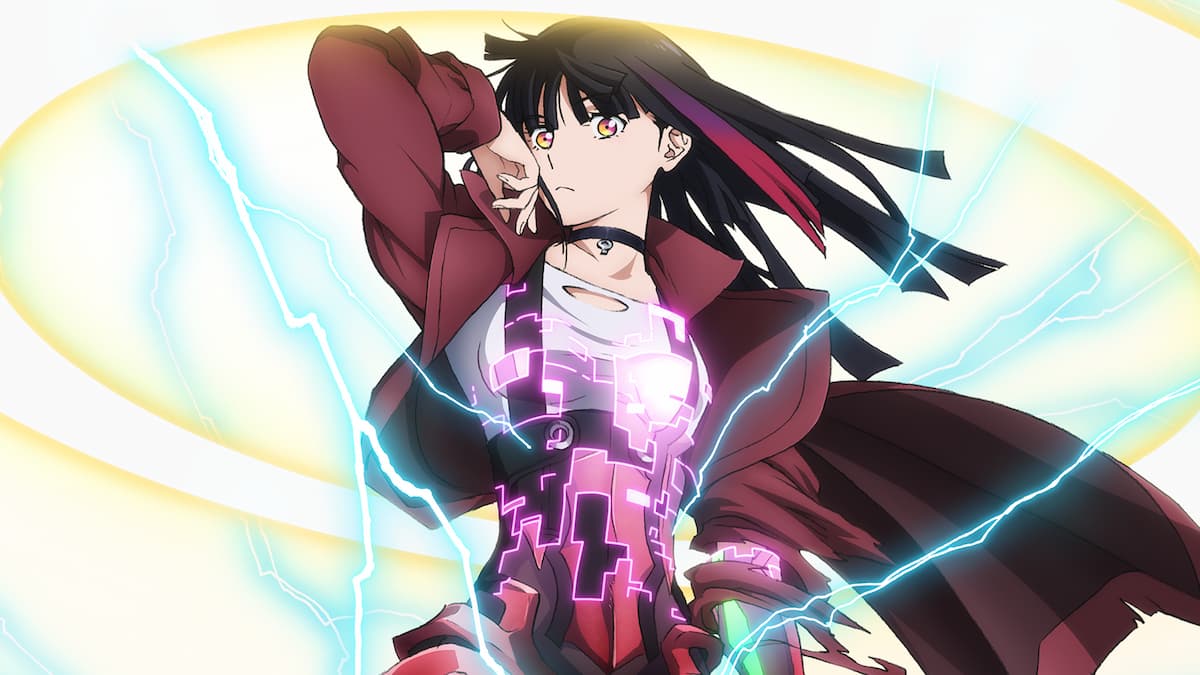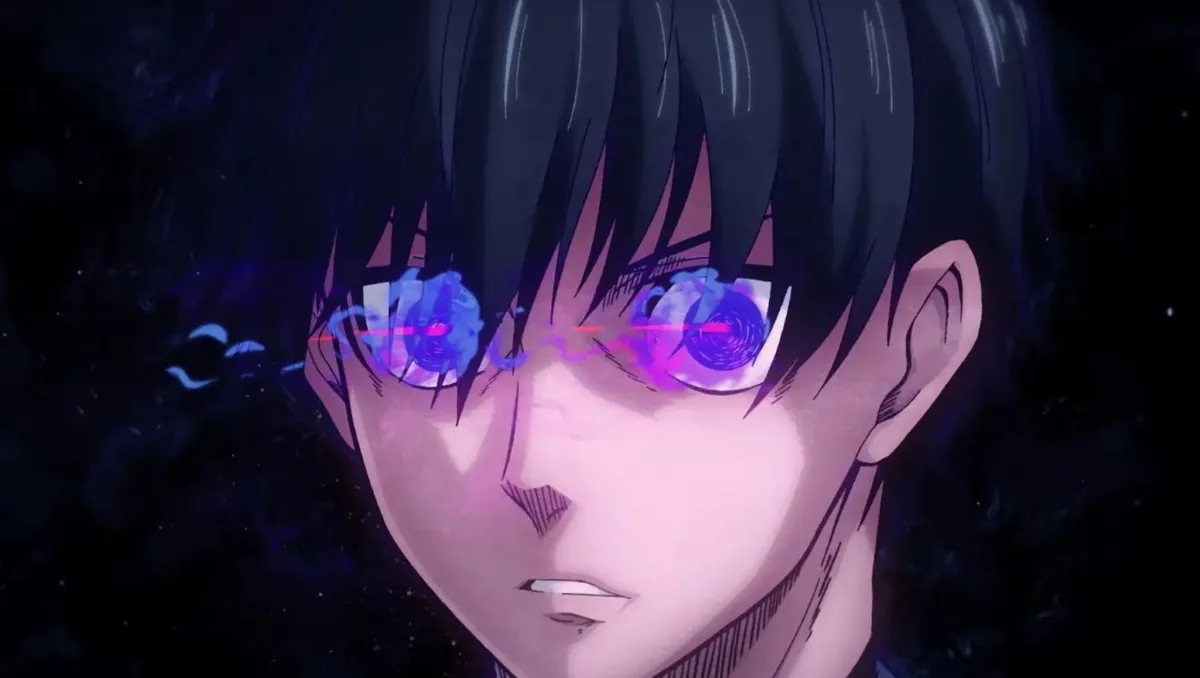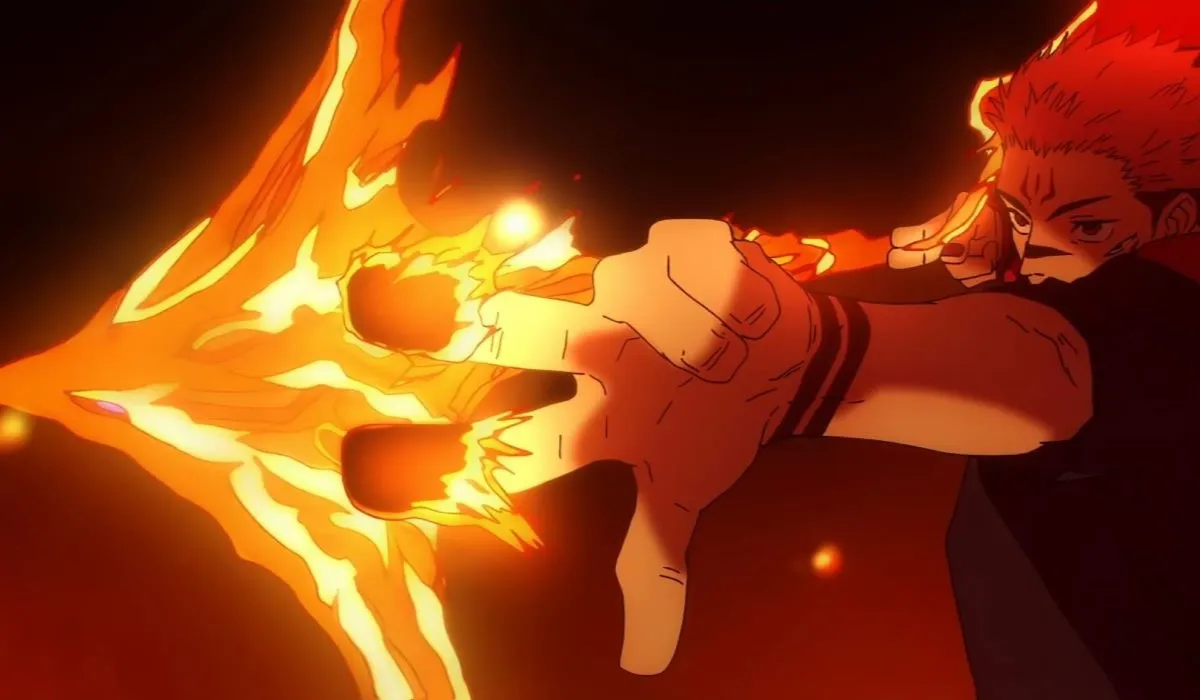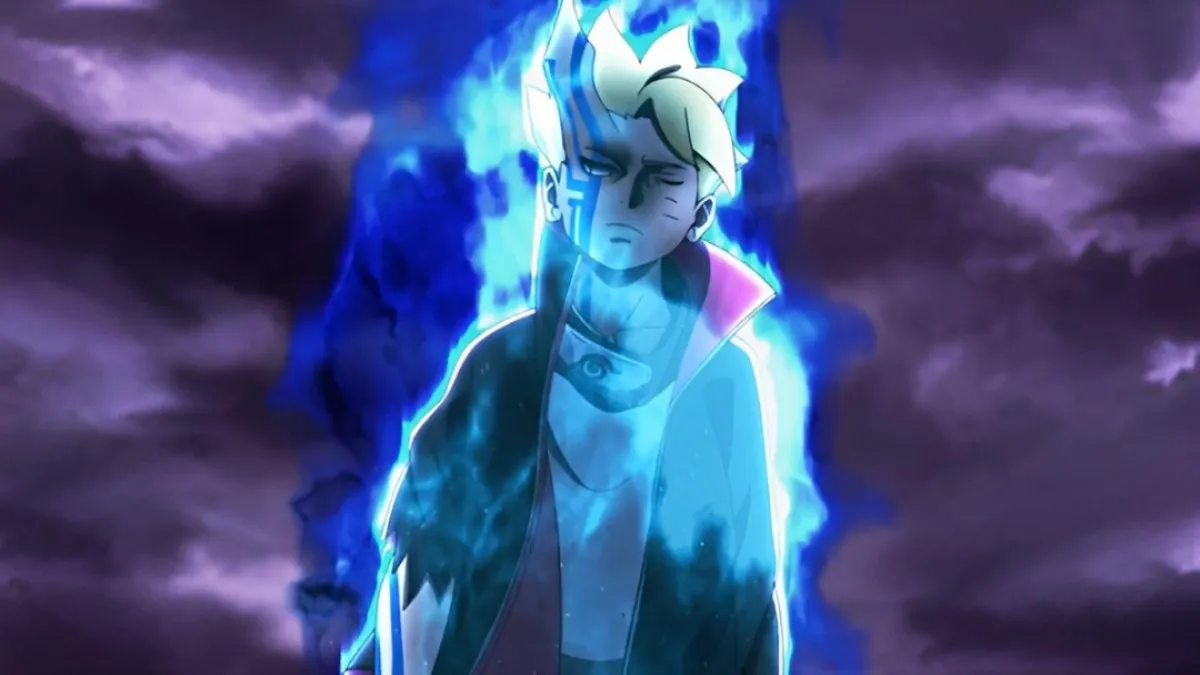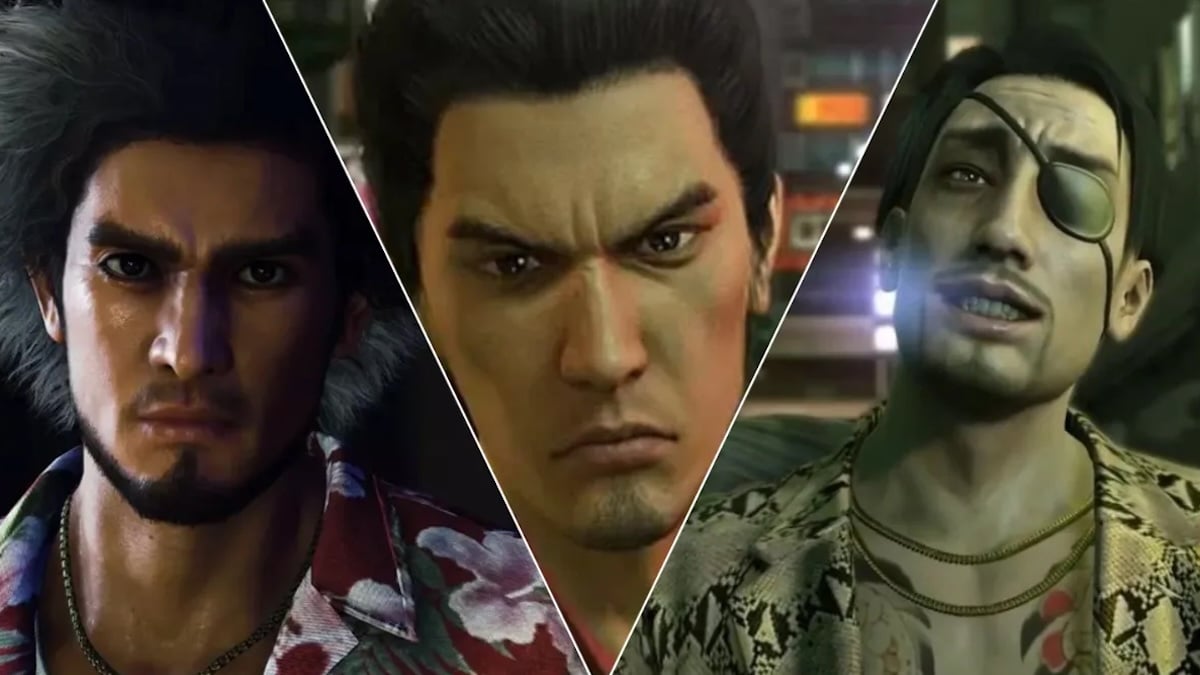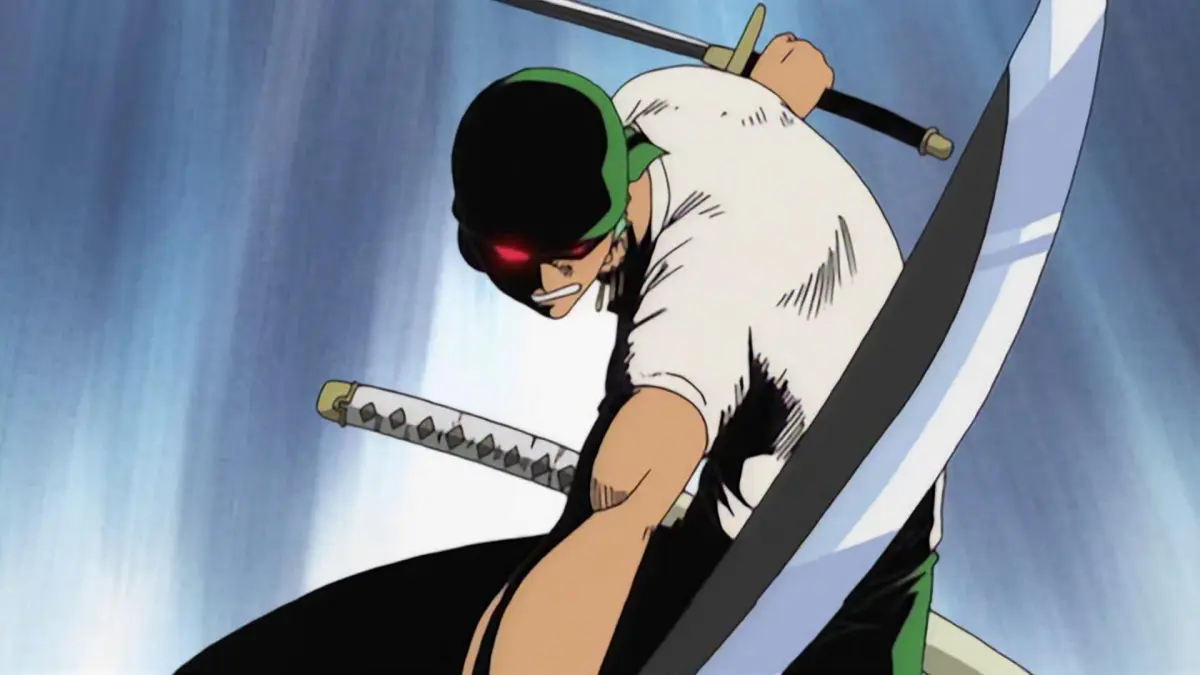One day, out of the blue, a vivid image popped into Yutaka Izubuchi’s mind. Though the event from Izubuchi’s vision takes place centuries—possibly even millennia—before anything you’ll see in one of its episodes, it marks the point where Metallic Rouge was born.
Izubuchi has long since established himself as one of the go-to designers for mech, with credits in animation and live action alike, in tentpole series like Gundam and Kamen Rider. But Izubuchi’s vision this time was about something else. He saw “a boy looking up, watching what looks like stars just coming down. And that’s the first contact of the aliens with the human race.”
Which brings us to another origin story. In 1998, two animators/animation directors and one producer from highly-regarded anime studio called Sunrise moved to found their own animation studio. At Sunrise, all three had placed several Gundam titles in their resume and had most recently worked on a sci-fi bounty hunter show called Cowboy Bebop. The three called their new studio Bones, and over the next 25 years, the studio would create some of the best series in the medium: Fullmetal Alchemist: Brotherhood, Mob Psycho 100, Space Dandy, and My Hero Academia, to name a few.
That founding producer, Masahiko Minami, teamed up with Izubuchi to create the series that would celebrate Bones’ 25th anniversary. The first thing they did was create a chronological sequence of events, the history of a new world. Then they picked the point where they would begin to tell this story—which became Metallic Rouge, the tale of two young women, Rouge and Naomi, getting their revenge. “It’s a process of building all of the components and then returning back to focus on that specific part of the storyline,” Izubuchi said through a translator.
“All of these [events] are consequences of that one image.”
World-building through music
“It’s quite unusual these days to create a big story from a chronological historical lineage of events,” Metallic Rouge‘s composer, Taisei Iwasaki, whose credits include Mamoru Hosoda’s Belle, mused through a translator. “We’re really at the genesis of a whole expansive world.”
Creating a world is not only the job of the animators, designer, and writers. Music also plays a huge role, and Iwasaki was engrossed with how to match visual world-building with musical world-building. “I’m consistently asking myself, ‘What’s the music like? What is the music that [Rouge and Naomi] would be listening to?’ … And that allows me to really center my musical style for this content.”
I asked if creating music for a future on Mars meant inventing new instruments or coming up with surprising chord changes. Iwasaki’s response was quite philosophical. “When I was recording for Blood Blockade Battlefront, I traveled to Africa and recorded music there,” Iwasaki explained. “I’ve made music with people from very different cultural backgrounds. But regardless of backgrounds—a good take is a good take. We know when music is good. And that must be because there’s something that’s central to us as humans in how we recognize good music and how we appreciate music.”
He continued, “So in creating music for the world of Metallic Rouge, it’s not about doing something completely different, but really still following the tradition of good music and pursuing music as he feels is best for us in the context of appreciation.”
The benefits of sci-fi and epic storytelling
Metallic Rouge brings Bones back into the sci-fi and mech roots that the studio’s founders honed at Sunrise. In fact, when asked why Bones picked a sci-fi story for its anniversary release, studio president and series producer Masahiko Minami quipped, through a translator, “The world of sci-fi is a perfect place for the imagination to really be the lead and guide through to expression, because illustration can make anything possible. And what do you expect? I was from Sunrise.”
Of course, sci-fi’s benefits extend beyond the fact that it’s a playground for the creative mind. “We’re in a postwar scenario in the storyline of Metallic Rouge,” said series composition writer & supervising director Yutaka Izubuchi. “By bringing the world into a sci-fi environment, we’re able to tackle themes that are more challenging to discuss in the modern situation. We’re able to ask questions of social unrest in a way that isn’t so personal, but really gets at the core of the problem—the cultural aspect, prejudice, desegregation, all of these things that are much more challenging to discuss if we make it too personal. By removing some of that with the degree of separation through science fiction, we’re really able to address it, highlight it, and tackle it as a theme within the content.”
What exactly Izubuchi means is already coming to light within episode one, which very clearly highlights the societal differences between humans and androids, called Neans. Neans are treated as a sub-human servant class. (Slight spoilers:) In the opening minutes of Metallic Rouge, Nectar—the substance keeping Neans alive—is stolen from a Nean working at a fancy nightlife club, simply so some humans can make a quick buck. Meanwhile, the Nean and his partner have to decide who forgoes Nectar and dies.
Such heavy themes make for a serious story, and it was originally going to be Rouge’s story only. “Initially, this wasn’t a duo story,” Izubuchi said. “But when I was thinking about the story, [I realized that] I wanted to add a little bit more dialogue for comedic relief, have little moments of lightness, bring some fun, cute laughter. And all of this could be made possible … by having a dual main character.”
The future of Bones
So much deep thought went into making Metallic Rouge. As I sat there in the panel, I couldn’t help but feel deep admiration for the deliberateness and care that went into making this world. This level of pre-planning and forethought is incredibly rare, in any media. It was clear that Bones was making a huge gamble. Metallic Rouge isn’t meant to be a standalone series—Bones president Masahiko Minami intimated he thinks of it as the first peg in an expanded universe, similar to Gundam.
When asked about Bones’ anniversary, he replied, “So it’s 25 years, but that’s really only a quarter of a century. What I really want to emphasize is that this is a starting point. It’s not a milestone; it’s to propel us to the next 25 years, to much more beyond. And this is a world that is easily adapted for detective stories. You can fit in a mystery, you can add some elements of horror. It’s really becoming the base foundation for many, many more decades to come of animation and the world expansion.”
The translator paused, and Minami confidently yet eagerly addressed the journalists directly: “Do you like this story?”
(featured image: Bones)



